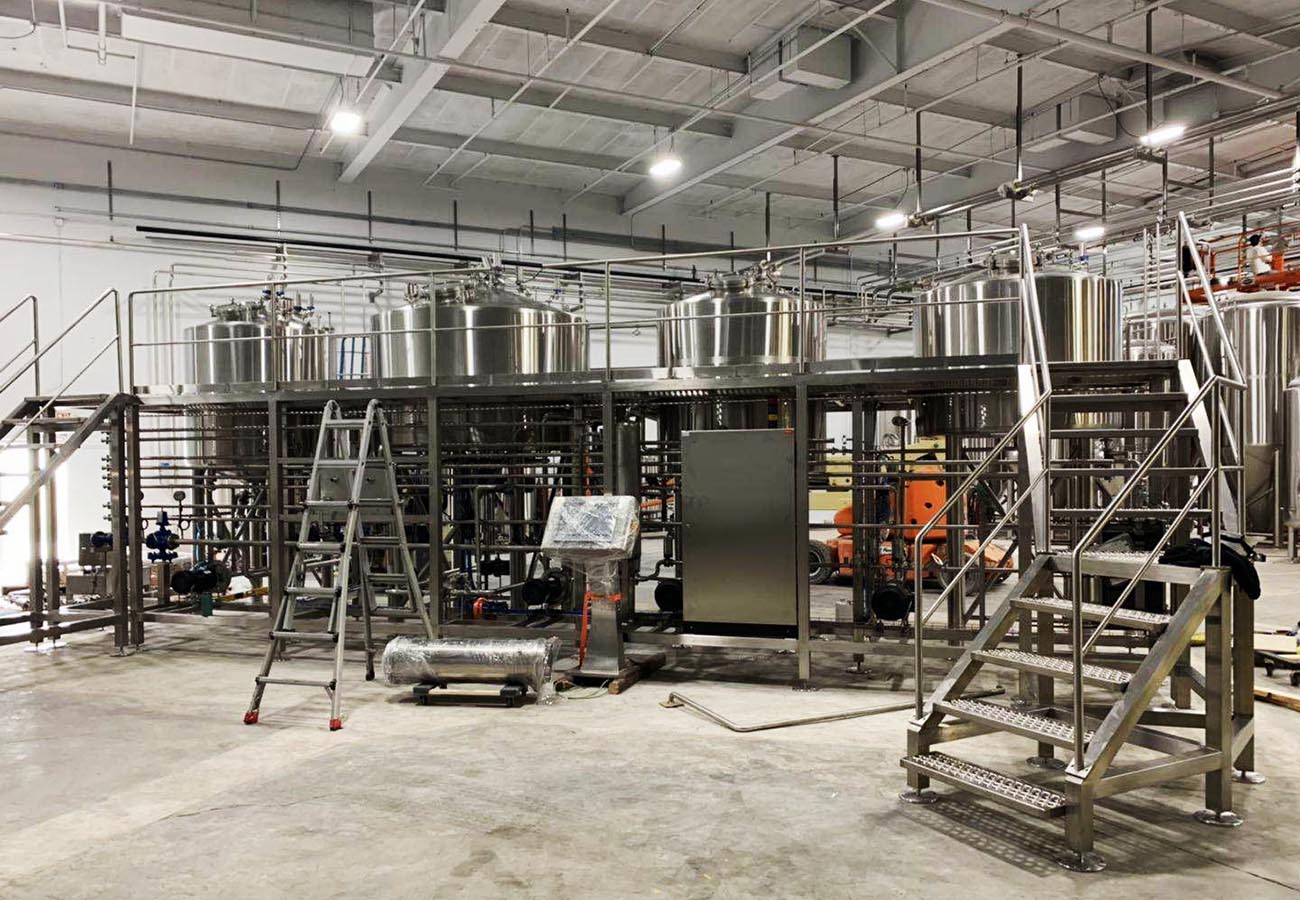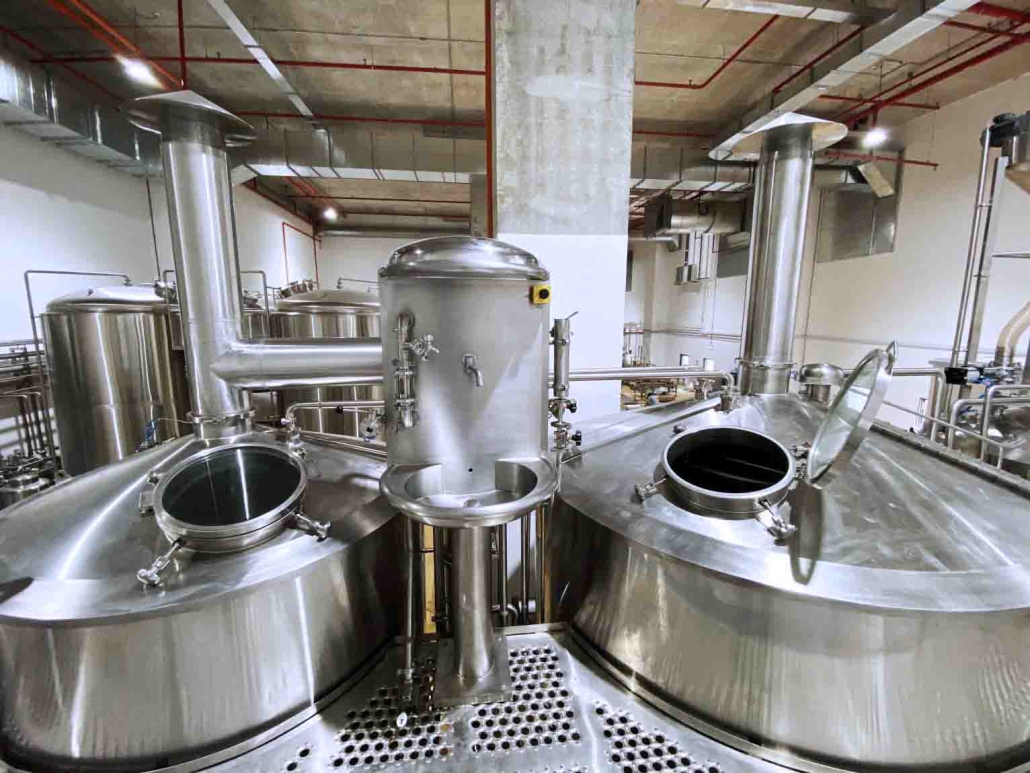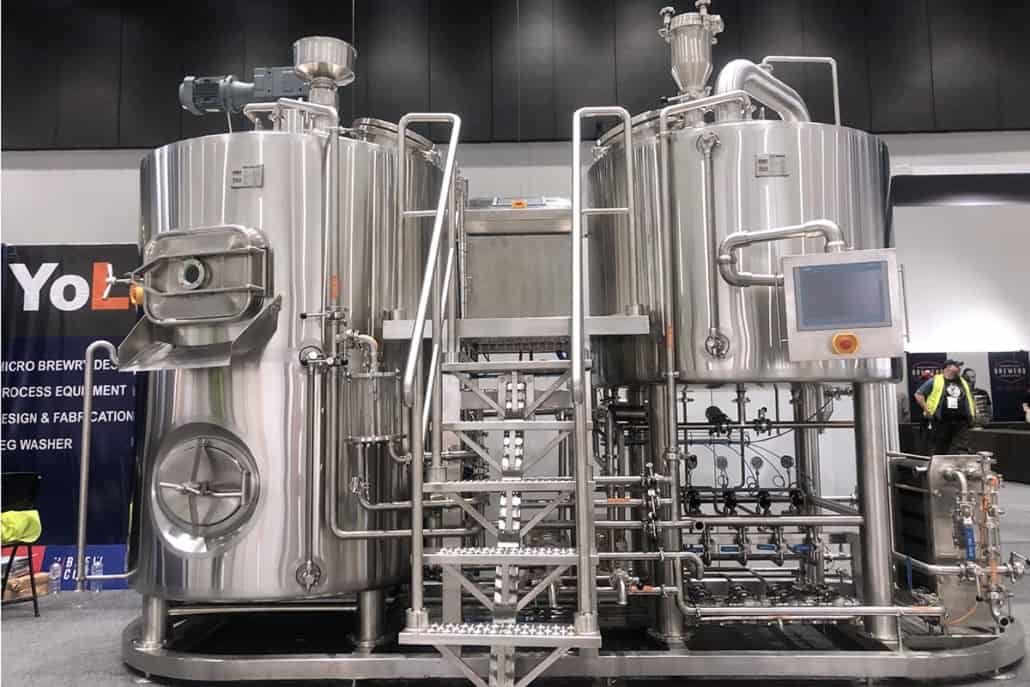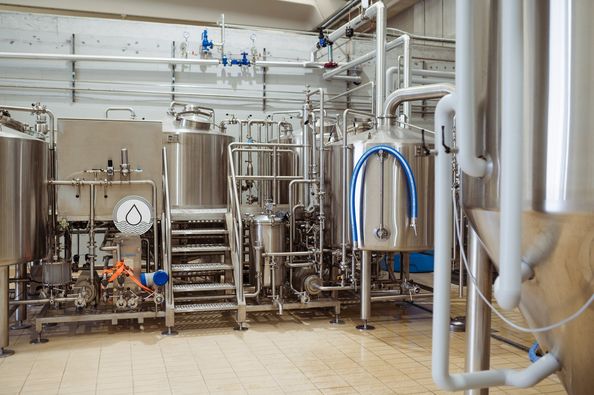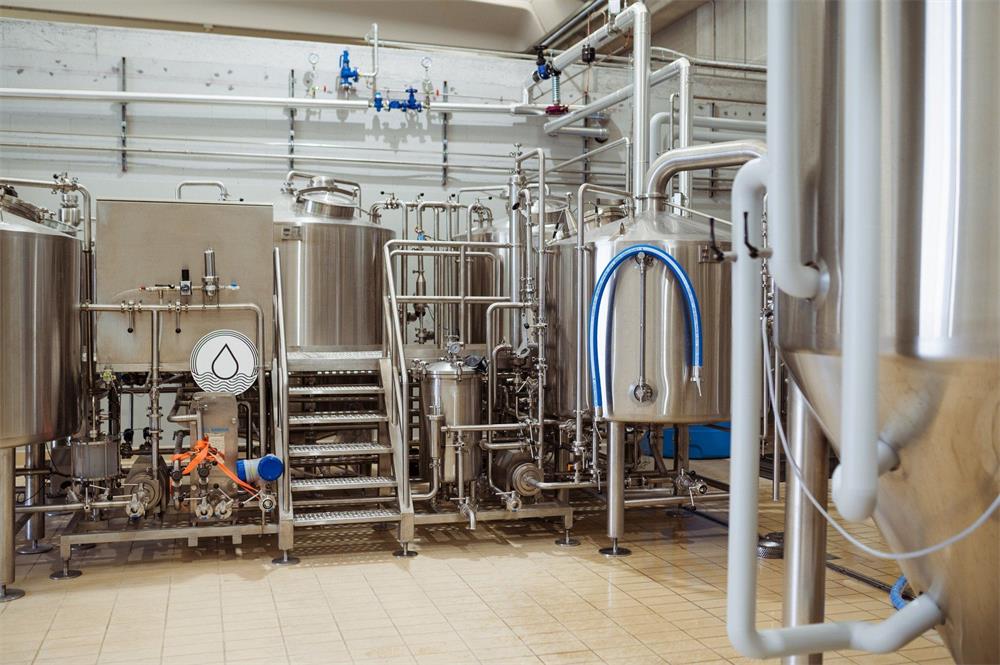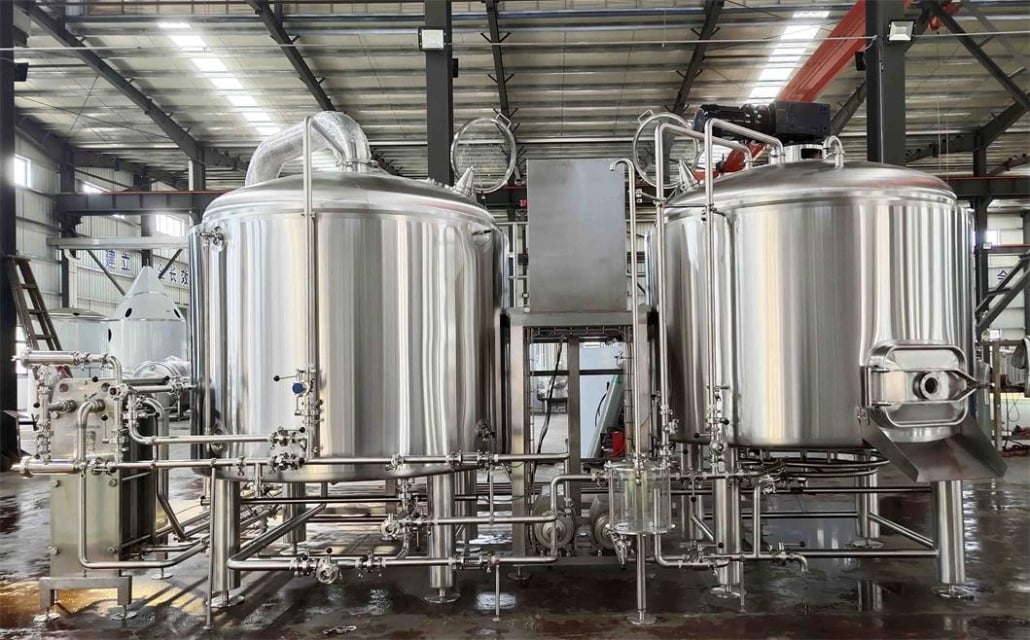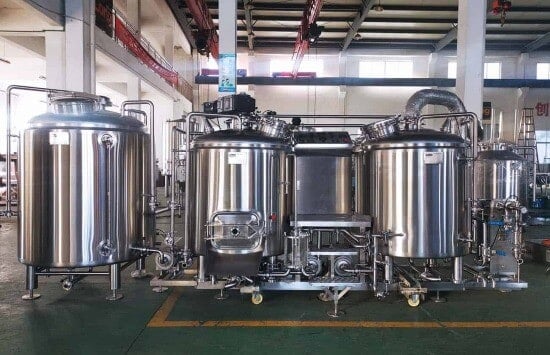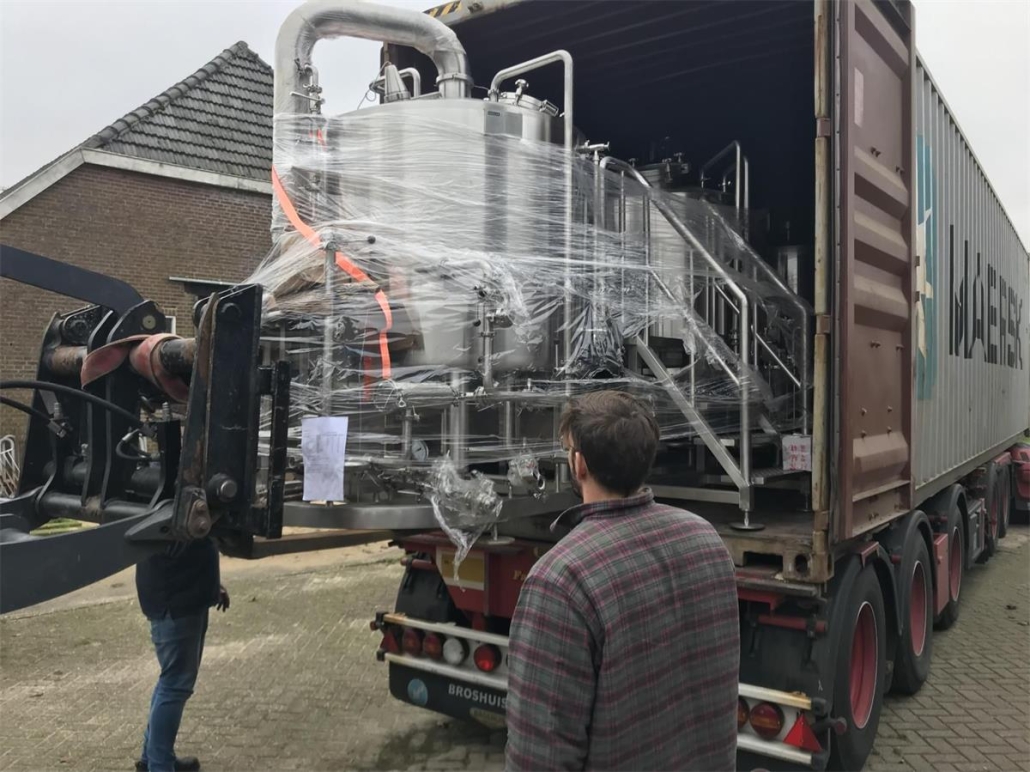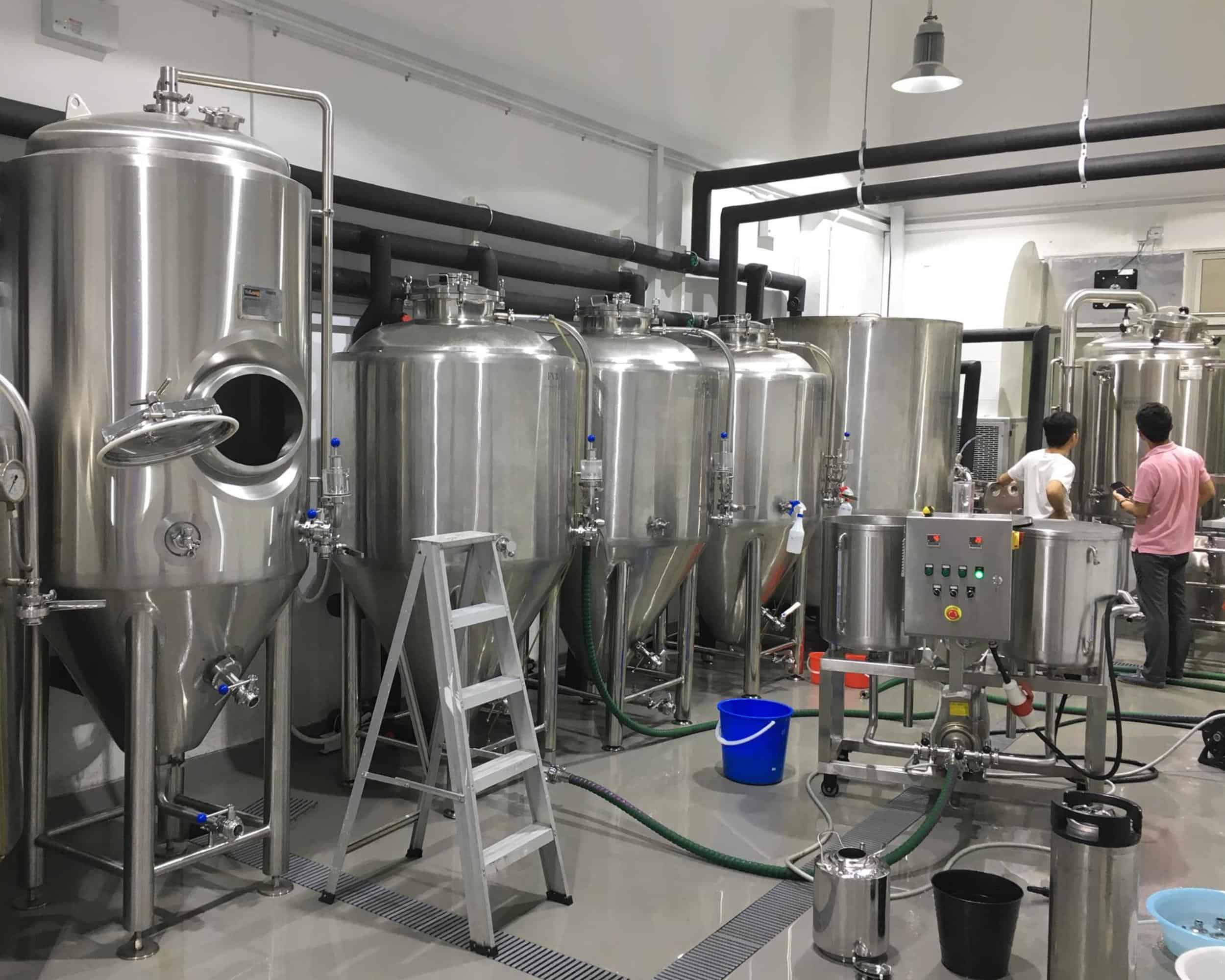
Brewhouse Equipment
Brewhouse equipment includes the tanks that produce wort and prepare the beer brew for fermentation. If you are looking for any size brewhouse for sale, YoLong Brewtech is the best place to start.
The size and scale of your brewhouse operation depends on your production needs. The brewhouse you order from YoLong will be fully customized for your individual requirements. Our brewhouse-buying customers range from beer hobbyists wanting a home brewing system that will fit into their garage through to clients needing a full-scale turnkey brewery system.
If you wish to start off small, a 5 bbl brewhouse would be adequate. If you think that 5bbl brewing equipment might not produce a big enough volume of beer, finding a 15 bbl brewhouse for sale might be more suitable. At YoLong, we will work with you to create the perfect personalized brewhouse system solution that is based on your specific and unique requirements.
 30HL Brewhosue
30HL Brewhosue Stacked brewing system
Stacked brewing system 10HL Brewing system
10HL Brewing system 10HL 3 vessel Brewing system
10HL 3 vessel Brewing system 24HL brewhouse equipment
24HL brewhouse equipment 2 vessel brewing system
2 vessel brewing system Craft Beer 2 brewpub
Craft Beer 2 brewpub 2 vessel Brewhouse-Sream
2 vessel Brewhouse-Sream
What is a brewhouse?
A brewhouse is a term used to describe a setup that brews beer and where beer can be produced (home brewing, commercial craft beer brewing, and industrial scale beer production). Brewhouse systems range in size from a 5 barrel brewing system all the way up to a 50 barrel brewing system.
Usually, brewhouse equipment is combined with specific vessels inside a working platform. The brewer operates the brewhouse through the control panel.
Factors Affecting Brewery Costs
Before we dive into the different brewery sizes and capacities, it’s important to consider the various factors that can affect the cost of starting a brewery.
Brewery Size & Capacity
The size and capacity of your brewery is perhaps the most significant factor when it comes to cost. The larger the brewery, the more equipment, ingredients, and labor you’ll need. A small, 5 bbl brewing system will be significantly cheaper than a 30 bbl brewhouse.
Location
The location of your brewery will also affect the cost. Rent, utilities, and taxes can vary significantly from state to state, and even from city to city. A brewery located in a high-cost area like New York City will have higher overheads than one in a smaller, more affordable town.
Equipment
Brewing equipment is a significant expense when starting a brewery. You’ll need kettles, fermenters, cooling systems, and more. The cost of equipment will vary depending on the size and complexity of your brewery, as well as the level of automation you choose.
Licenses & Permits
Before you can start brewing, you’ll need to obtain various licenses and permits from your state and local government. These can include a brewer’s license, federal and state tax IDs, and more. The cost of licenses and permits can vary, but you should budget a few thousand dollars for this.
Labor
Finally, you’ll need to consider the cost of labor. Brewing beer is a labor-intensive process, and you’ll need to hire experienced brewers, as well as packaging and sales staff. The cost of labor will depend on your location, but you should budget around $50,000 per employee per year.
Brewery Size & Capacity
As we’ve already mentioned, the size and capacity of your brewery is one of the most important factors when it comes to cost. There are several different options available, ranging from a small 5 bbl brewing system to a large 30 bbl brewhouse.
At YoLong, we build each brewhouse on a case by case basis. We can assist you in setting up a brewery of any size, from a 5 bbl brewing system to a 30 bbl brewhouse. The size and capacity of the brewhouse will depend on your production goals, budget, and available space.
| System Size | Annual Output | Typical Equipment | Estimated Cost Range | Best For |
|---|---|---|---|---|
| 5 BBL System | ~500 barrels/year | Hot liquor tank, mash tun, brew kettle, fermenters | $50,000 – $100,000 | Small breweries, brewpubs |
| 15 BBL System | ~1,500 barrels/year | Hot liquor tank, mash tun, brew kettle, fermenters | $150,000 – $250,000 | Expanding small to medium-sized breweries |
| 20–30 BBL Brewhouse | 3,000–6,000 barrels/year | Hot liquor tank, mash tun, brew kettle, fermenters, bright tanks | $500,000 – $1,000,000 | Regional breweries with wider distribution |
Use the tips below to choose your own range of brewing equipment
Nano Brewery Equipment (1BBL-5BBL)
Brewpub Brewing Equipment (5BBL-10BBL)
Microbrewery Equipment (10BBL-20BBL)
Commercial Brewery Equipment (20BBL-50BBL)
How to Calculate the Brewhouse Equipment Size?
Are you planning to open your own brewery or expand your current brewing facility? One of the most critical decisions you will make is determining the size of your brewhouse equipment. But how do you calculate the size of your brewhouse? YoLong’s technical engineers will help you confirm the scale of the facility, which then determines how your customized brewhouse will be designed and installed for maximum efficiency and output.

What Should Include in Your Brewhouse Equipment List?
We can divide brewhouse equipment into several types. One of the methods is to count the number of vessels in the brewhouse. For example, 2-vessel brewhouse equipment includes a Mash Lauter tun and a Kettle whirlpool tun. The brewhouse can be assembled with four vessels, Mash tun, Lauter tun, Kettle tun, Whirlpool tun. So for a 3-vessel brewhouse, there are various combinations. For some large scale microbreweries, extra vessels are used in the brewhouse. A 5-vessel brewhouse would have a designated Mash Mixer, Lauter Tun, Holding Kettle, Boil Kettle, and a Whirlpool. Each of these designated vessels serves a particular purpose. With these extra tanks, you would work at a higher efficiency and volume output. Finally, you can choose a brewhouse according to your production capacity and budget. Listed below are several different configurations of brewhouses based on the number of vessels:
Examples of Complete 5-30BBL Brewing Equipment
Besides the brew vessels, there are several items below in the brewhouse. These are also very important parts and decide the quality/user experience.
If you choose fully automated brewhouse equipment that uses PLC control, then the program you use is important. Fully automated brewhouse equipment that uses PLC control offers several advantages. The program used is crucial to the brewing process, and it should be reliable and easy to use. YoLong automated software and controls provide significant advantages in electrical design and programming work. They also have a professional engineer team that provides long-term technical support for any control problem before and after the sale.
YoLong automated software and controls offer big advantages in electrical design and programming work. We have a special professional engineer team that provides long-term technical support for any control problem before and after the sale.

How to Choose the Heating of Brewhouse Equipment?
Many brewers are very concerned about the heating method of the brewhouse equipment. Homebrewers might not know about the differences between the various heating methods. Check out your local tech school that offers night classes, as many give lectures on brewing zymology and its practical applications.
Basically, there are three ways of heating in a brewhouse. They all work in different ways and give similar results. There is no single best heating method; you can choose one who more suits your site condition.
Depending on your size, budget, and goals, there will be a different brewhouse heating option that works best for you. These are the three main options for Brewhouse heating.
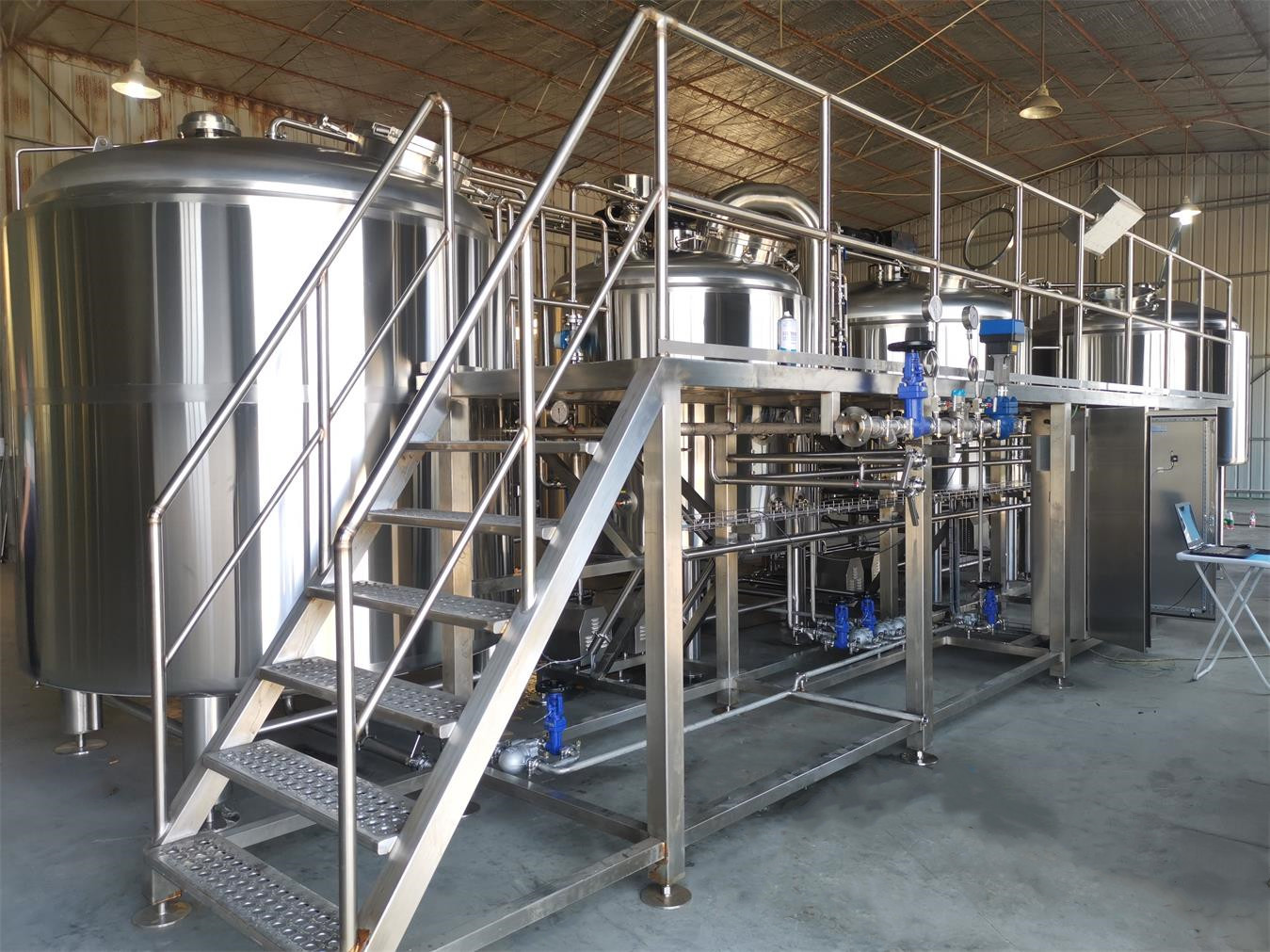
| Heating Method | Pros | Cons | When to Choose This Method |
|---|---|---|---|
| Steam Heating | – Even heat distribution – Prevents wort scorching – Precise temperature control – Ideal for scaling up | – High initial installation cost – Requires boiler and safety training – High energy consumption | Choose steam heating if you operate a medium to large brewhouse and need consistent control, plan to scale production, and can handle the upfront investment and safety requirements. |
| Direct Heat | – Lower equipment cost – Simple setup and maintenance – Fast heat-up time | – Higher risk of scorching – Less efficient – Limited temperature control | Choose direct heat if you’re on a tighter budget, running a small to medium brewhouse, and can manage the potential for uneven heating. |
| Electric Heating | – Clean and safe operation – Precise control – Compact and easy to install | – Slower heating – Expensive electricity cost – Not ideal for large-scale brewing | Choose electric heating if you’re running a small brewhouse with space or cost limitations that rule out steam or direct heat, and electricity is readily accessible. |
Does Your Brewhouse Need Turnkey Project Services?
Turnkey Breweries for You, the Brewer
Brewhouse Turnkey services involve the provision of a completed product or service – ready for immediate use: no running in, no warming up, just straight to work.
YoLong has been designing, fabricating, and installing breweries for over fifteen years. We understand that brewers have a lot on their “to-do” list when undergoing an expansion or new brewery installation.
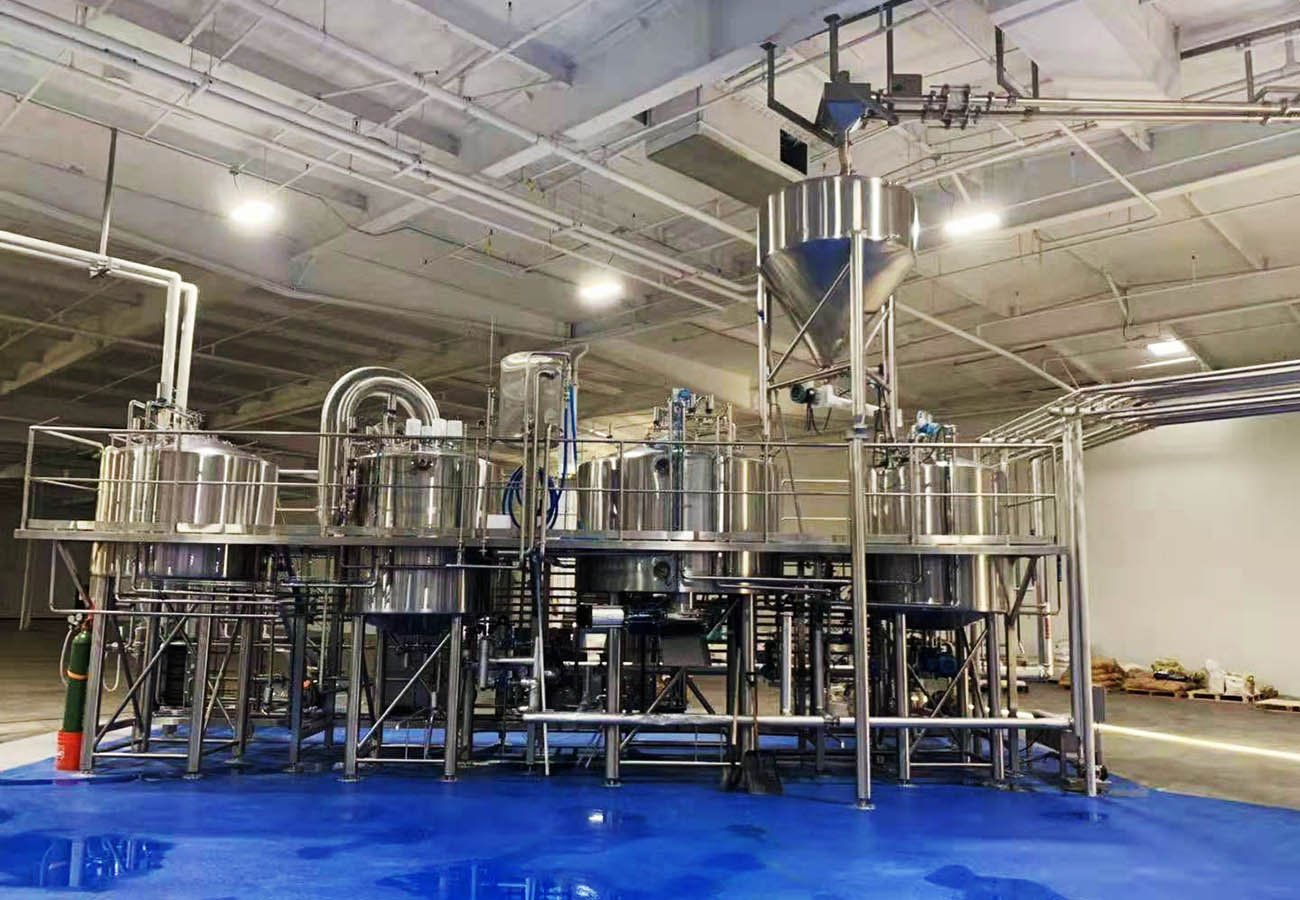
Description of the YoLong Turnkey Projects
At YoLong, we listen to your requirements and provide a clearly defined interface service that can be completely customized to the clients’ individual needs.
Examples of Turnkey-Key Brewing Equipment
